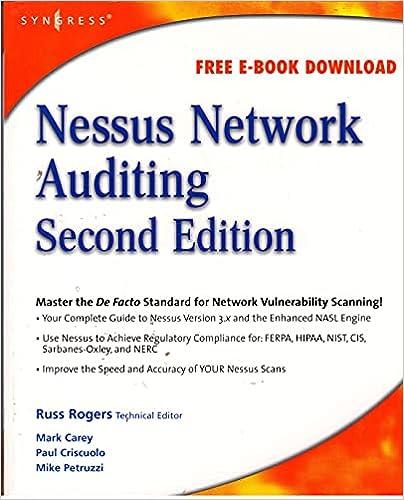Question
1. The expected average rate of return for a proposed investment of $765,000 in a fixed asset, with a useful life of four years, straight-line
1. The expected average rate of return for a proposed investment of $765,000 in a fixed asset, with a useful life of four years, straight-line depreciation, no residual value, and an expected total net income of $303,000 for the four years, is (round to two decimal points).
2.Hayden Company is considering the acquisition of a machine that costs $462,000. The machine is expected to have a useful life of six years, a negligible residual value, an annual net cash flow of $97,000, and annual operating income of $82,450. What is the estimated cash payback period for the machine (round to one decimal points)?
3.The production department is proposing the purchase of an automatic insertion machine. It has identified three machines and has asked the accountant to analyze them to determine the best average rate of return. Which machine has the best average rate of return?
| Machine A | Machine B | Machine C | |
| Estimated average annual income | $48,521.06 | $83,178.60 | $64,923.00 |
| Average investment | $346,579.00 | $277,262.00 | $432,820.00 |
4.Heidi Company is considering the acquisition of a machine that costs $788,400. The machine is expected to have a useful life of six years, a negligible residual value, an annual net cash flow of $131,400, and annual operating income of $73,000. What is the estimated cash payback period for the machine (round to one decimal point)?
5.The amount of the average investment for a proposed investment of $209,000 in a fixed asset with a useful life of four years, straight-line depreciation, no residual value, and an expected total net income of $34,400 for the four years is
6.The amount of the estimated average income for a proposed investment of $68,000 in a fixed asset, giving effect to depreciation (straight-line method), with a useful life of four years, no residual value, and an expected total income yield of $25,100, is
7.Use these present value tables to answer the question that follow.
Below is a table for the present value of $1 at Compound interest.
| Year | 6% | 10% | 12% |
| 1 | 0.943 | 0.909 | 0.893 |
| 2 | 0.890 | 0.826 | 0.797 |
| 3 | 0.840 | 0.751 | 0.712 |
| 4 | 0.792 | 0.683 | 0.636 |
| 5 | 0.747 | 0.621 | 0.567 |
Below is a table for the present value of an annuity of $1 at compound interest.
| Year | 6% | 10% | 12% |
| 1 | 0.943 | 0.909 | 0.893 |
| 2 | 1.833 | 1.736 | 1.690 |
| 3 | 2.673 | 2.487 | 2.402 |
| 4 | 3.465 | 3.170 | 3.037 |
| 5 | 4.212 | 3.791 | 3.605 |
Using the tables above, what is the present value of $19,869.00 (rounded to the nearest dollar) to be received at the end of each of the next four years, assuming an earnings rate of 12%?
8. The management of Wyoming Corporation is considering the purchase of a new machine costing $375,000. The company's desired rate of return is 6%. The present value factor for an annuity of $1 at interest of 6% for five years is 4.212. In addition to the foregoing information, use the following data in determining the acceptability of this investment:
| Year | Income from Operations | Net Cash Flow | ||
| 1 | $18,750 | $93,750 | ||
| 2 | 18,750 | 93,750 | ||
| 3 | 18,750 | 93,750 | ||
| 4 | 18,750 | 93,750 | ||
| 5 | 18,750 | 93,750 | ||
The net present value for this investment is
9. The expected average rate of return for a proposed investment of $4,200,000 in a fixed asset, using straight-line depreciation, with a useful life of 20 years, no residual value, and an expected total net income of $12,600,000 over the 20 years is (round to two decimal points).
Step by Step Solution
There are 3 Steps involved in it
Step: 1

Get Instant Access to Expert-Tailored Solutions
See step-by-step solutions with expert insights and AI powered tools for academic success
Step: 2

Step: 3

Ace Your Homework with AI
Get the answers you need in no time with our AI-driven, step-by-step assistance
Get Started


